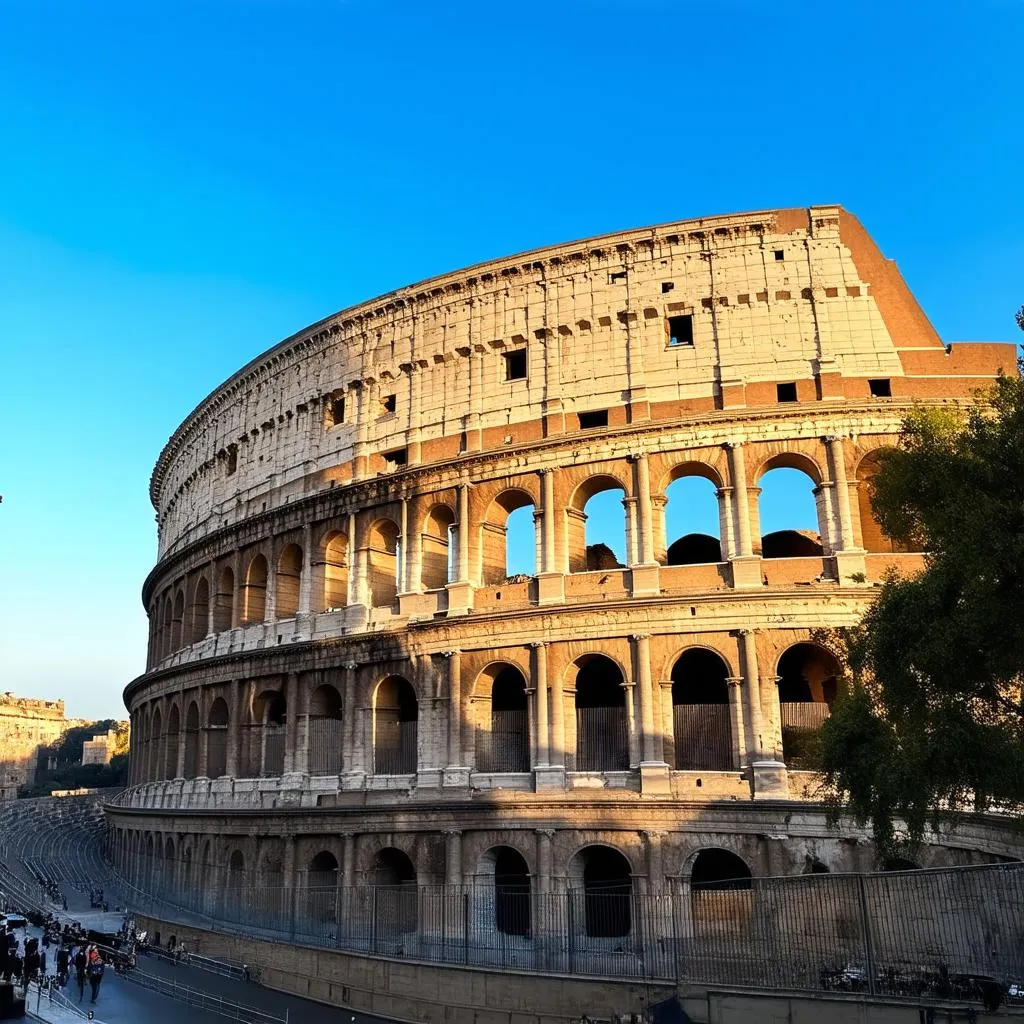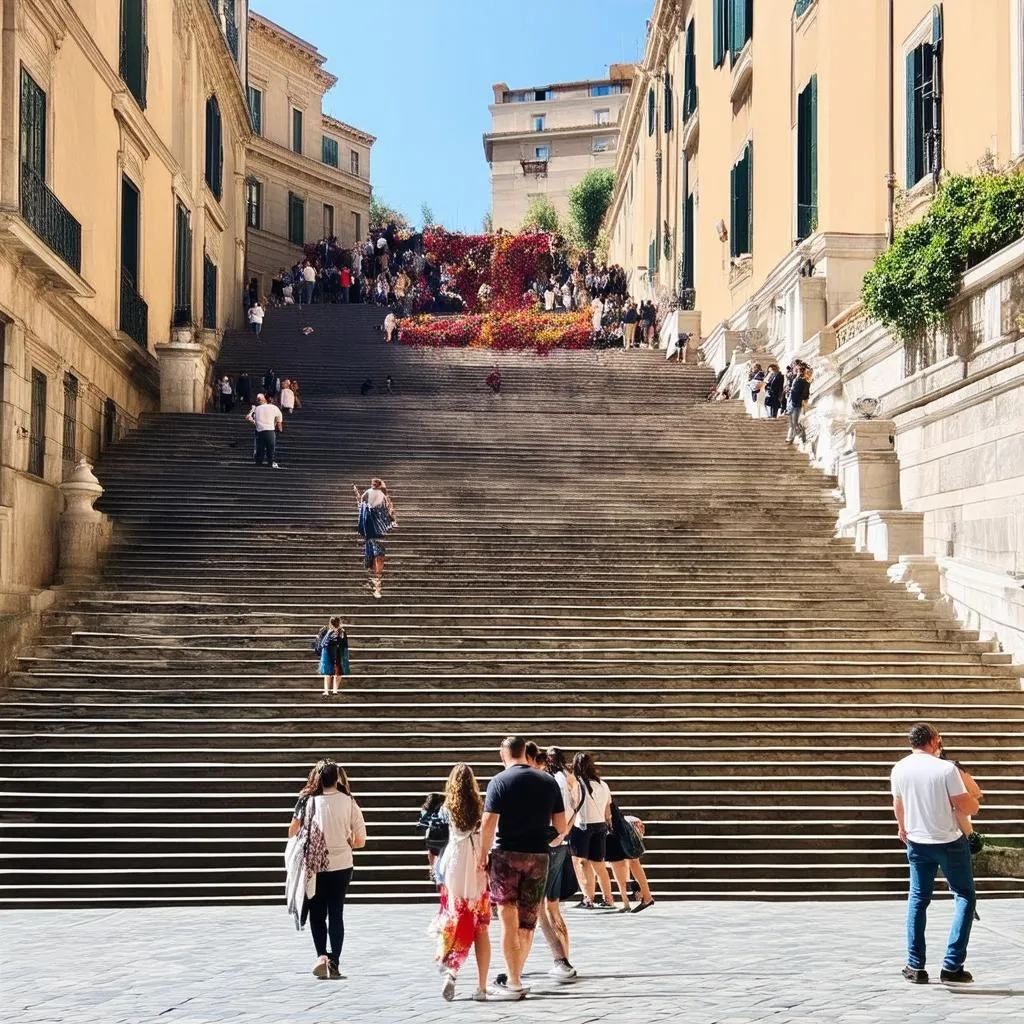Have you ever dreamt of wandering through the ancient ruins of Rome, feeling the echoes of emperors and gladiators whisper through the centuries? For generations, travelers have been captivated by the Eternal City, and few have captured its magic quite like H.V. Morton in his classic travelogue, “A Traveller in Rome”. This book, a blend of history, observation, and personal reflection, is more than just a guidebook; it’s a love letter to a city steeped in legend and wonder.
Unveiling the Soul of Rome with H.V. Morton
Published in 1957, “A Traveller in Rome” transports readers back to a time when Rome was emerging from the shadows of World War II, rediscovering its identity as a modern metropolis without losing its ancient allure. Morton, with his keen eye for detail and infectious enthusiasm, paints vivid pictures of iconic landmarks like the Colosseum, the Pantheon, and the Forum, bringing their history to life with anecdotes and historical insights.
But Morton doesn’t just dwell on the grand spectacle. He delves into the heart of Rome, exploring hidden alleyways, bustling markets, and quiet piazzas, capturing the rhythm of daily life and the spirit of its people. He introduces us to the city’s vibrant tapestry of characters – from street vendors to artists, priests to politicians – each contributing to Rome’s unique charm.
More Than Just a Guidebook: A Journey of Discovery
“A Traveller in Rome” is more than just a guidebook; it’s an invitation to experience Rome through Morton’s eyes. He encourages readers to embrace the unexpected, to get lost in the labyrinthine streets, and to savor every moment of their Roman adventure.
Here’s why Morton’s work continues to resonate with travellers today:
- Evocative Storytelling: Morton masterfully weaves history, anecdote, and observation, creating an immersive experience for the reader.
- Timeless Appeal: While some practical details may be outdated, Morton’s observations about Roman culture and character remain strikingly relevant.
- Contagious Enthusiasm: His passion for Rome is contagious, igniting the reader’s own wanderlust and desire to experience the city firsthand.
Planning Your Own Roman Holiday
Inspired by Morton’s evocative descriptions? Here are some tips for planning your own Roman adventure:
1. Immerse Yourself in History:
- Visit the Colosseum and the Roman Forum: Stand in the footsteps of gladiators and emperors.
- Explore the Pantheon: Marvel at this architectural marvel, its dome a testament to Roman ingenuity.
- Wander through Trastevere: This charming neighborhood, with its narrow cobblestone streets and ivy-covered buildings, offers a glimpse into Rome’s past.
2. Embrace the Unexpected:
- Get lost in the backstreets: Discover hidden trattorias, artisan workshops, and quaint piazzas.
- Visit the Campo de’ Fiori market: Experience the sights, sounds, and smells of a traditional Roman market.
- Enjoy a leisurely passeggiata: Join the locals in their evening stroll, soaking up the atmosphere.
3. Savor the Flavors of Rome:
- Indulge in authentic Roman cuisine: Sample local specialties like cacio e pepe, carbonara, and artichokes prepared “alla Romana.”
- Enjoy a gelato break: Cool off with a scoop (or two!) of delicious Italian gelato.
- Sip espresso in a local cafe: Watch the world go by while enjoying this Italian staple.
 Ancient Rome's Colosseum
Ancient Rome's Colosseum
Beyond “A Traveller in Rome”: Exploring More of Italy
Morton’s love affair with Italy extended far beyond Rome. He penned equally captivating accounts of his journeys through Venice, Florence, and the Italian countryside. For those seeking to delve deeper into Morton’s work and Italy’s diverse tapestry, these books offer a fascinating glimpse into the country’s soul:
- A Traveller in Italy: Morton’s exploration of Italy beyond Rome, encompassing art, history, and culture.
- A Traveller in Venice: A captivating journey through the canals and history of this unique city.
- A Traveller in Southern Italy: An exploration of the beauty, traditions, and flavors of Southern Italy.
 Tourists gather at the Spanish Steps in Rome
Tourists gather at the Spanish Steps in Rome
FAQs about Traveling to Rome
- What is the best time to visit Rome? Spring (April-May) and Fall (September-October) offer pleasant weather and fewer crowds.
- How many days do I need to see Rome? A minimum of 3-4 days is recommended to experience the main highlights.
- Is it easy to get around Rome? Rome has an efficient public transportation system with buses, trams, and a metro.
- Do I need to speak Italian? While English is widely spoken in tourist areas, learning a few basic Italian phrases will enhance your experience.
Conclusion: Embark on Your Own Roman Adventure
H.V. Morton’s “A Traveller in Rome” is more than just a travelogue; it’s an invitation to experience the timeless magic of the Eternal City. From its ancient ruins to its hidden corners, Rome offers a tapestry of experiences waiting to be discovered. So, pack your bags, grab a copy of Morton’s book, and let the spirit of adventure guide you as you explore the captivating streets of Rome.
Looking for more travel inspiration and tips for planning your trip to Italy? Visit travelcar.edu.vn for comprehensive guides, itineraries, and insider tips to make your journey unforgettable.